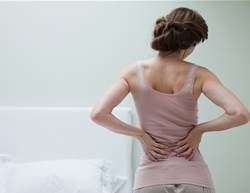Chances are high you will get a urinary tract infection (UTI) at some point. Thanks to our anatomy, which makes it easier for faecal bacteria to reach the urinary tract than a man's body does, women have more than a 50% chance of getting a UTI in their lifetime.
If you're postmenopausal, your likelihood of having a UTI increases. "In women after menopause, an average of one UTI a year is pretty common," says urogynaecologist Dr Kavita Mishra. Changes in the pH of the vagina can alter the balance of bacteria and yeast in postmenopausal women and make it easier for bacteria to make their way into the urethra.
"UTIs are also fairly common for sexually active women," adds Mishra, although peeing before and after sex can help prevent their occurrence. Women with diabetes are also more likely to get a UTI because of condition's impact on the immune system. And unfortunately, there are even more common factors that might make you more predisposed to get a UTI, including constipation, dehydration, a switch in birth control and even the type of underwear you have on.
To make matters worse, there's a plethora of misinformation out there about UTIs, making it even harder for women to open up about dealing with the infection or find the proper treatment. For example, getting a UTI says nothing about your level of hygiene. It's also not a female-only issue—around one in 20 Australian men (especially those over 50) will get a UTI in their lifetime. And here's the big one: Cranberry juice is not the magical cure for UTIs. While cranberry juice contains an active ingredient to prevent bacteria from attaching itself to the walls of your bladder, the juice doesn't contain enough of that ingredient to really make a difference (plus, it's packed with added sugar).
Instead of cranberry juice, try to drink six to eight 250mL glasses of water every day. Don't force yourself to hold in pee for long periods of time—bacteria flourishes when urine stays in the bladder for too long. Always wipe from front to back after having a bowel movement. Avoid using birth control with spermicides. All of these small, everyday habits will go a long way toward preventing UTIs.
Knowing what to look for and what to do about it can help keep you comfortable and prevent a UTI from turning into a serious infection—here are eight symptoms to watch for:
(Want to pick up some healthier habits? Sign up for FREE to get healthy living tips, weight loss inspiration, slimming recipes and more delivered straight to your inbox!)
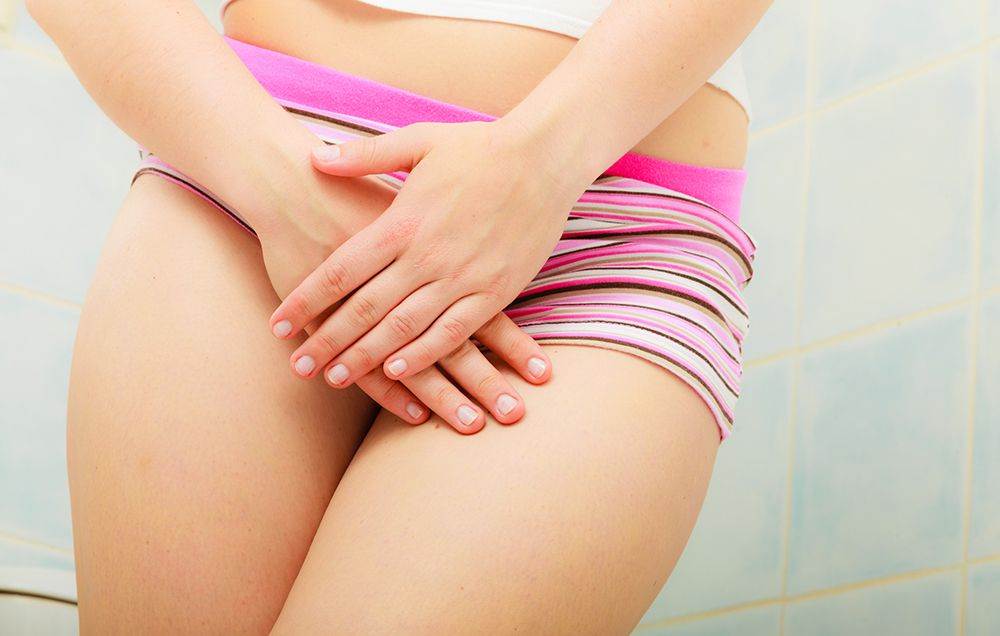
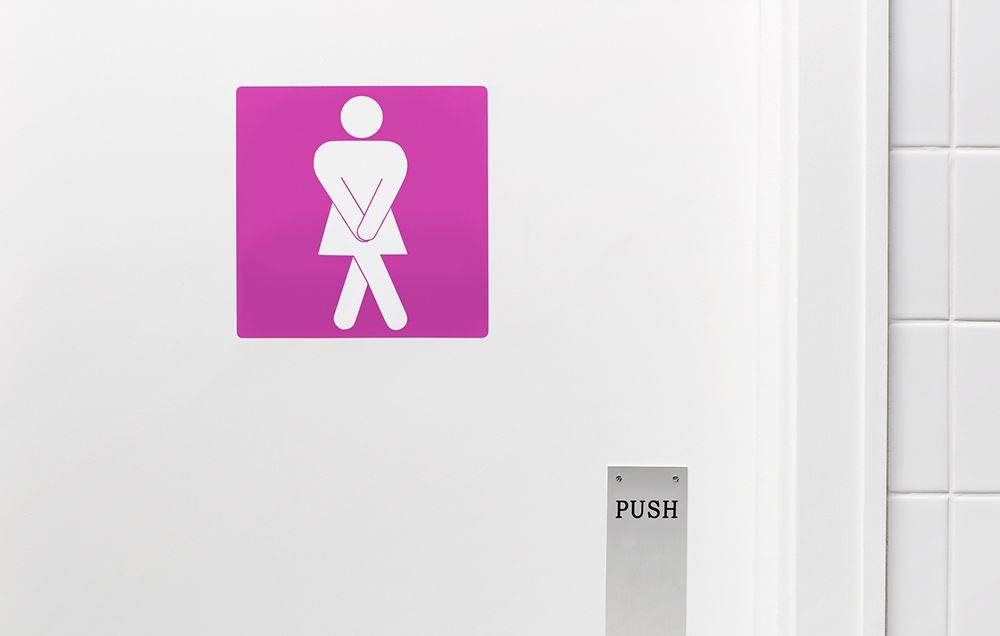
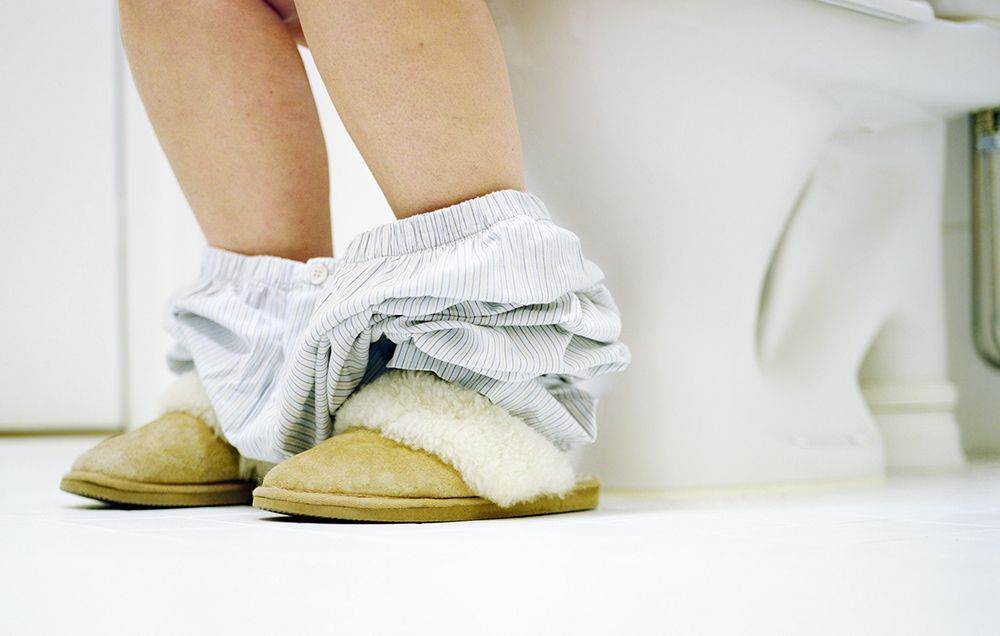





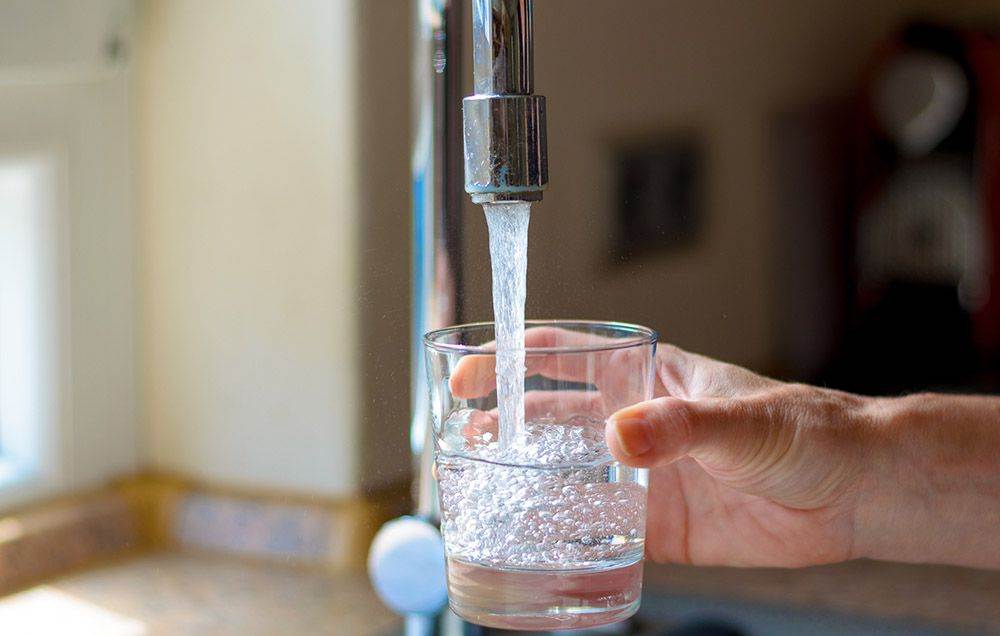
GARO/PHANIE/Getty Images
Pain, burning, or stinging when you pee
Pain or burning when you pee is often the first sign of a UTI or bacteria in the urethra or bladder. However, it doesn't mean you have a full-blown UTI unless it continues. If you get only pain or burning once and not again for the rest of the day and you don't show any other signs or symptoms, your body has already flushed out the bacteria, and you likely don't have to worry.
Drinking extra water as soon as the burning starts may help flush out small amounts of bacteria and help prevent the infection from growing according to urogynaecologist Dr Lisa Dabney.
GARO/PHANIE/Getty Images
You need to go RIGHT NOW.
If all you can think about is how badly you have to pee, especially if you just went, you probably have a UTI. The bacteria irritate the urethra and the lining of the bladder and make you feel like you desperately need to pee constantly.
GARO/PHANIE/Getty Images
Cloudy, bloody, or discolored urine
The colour of your pee can tell you a lot of things, including whether you have an infection. Anything off the yellow or clear spectrum is cause to worry. Cloudy, red or brown urine are all signs of infection. Before you panic, take stock of what you ate in the past 24 hours. Beets and other foods can also make your pee a frightening pink, orange, or red colour, but you won't have any pain, and the colour will quickly pass if something you ate is to blame.
GARO/PHANIE/Getty Images
Peeing doesn't bring relief.
Frequent urination is another red flag for an infection. A UTI can make you feel like you have a full bladder, but only dribbles come out when you go. Frequent trips to the bathroom and little to no relief are telltale signs to look out for.
GARO/PHANIE/Getty Images
Smelly urine
You don't have to sniff the bowl every time you go, but a strong, pungent smell is a common UTI symptom. However, some foods may also cause your pee to smell. Coffee and asparagus are two likely culprits. If your urine still smells after going a couple of times, or it's paired with a cloudy or red colour, it's time to call the doctor.
GARO/PHANIE/Getty Images
Extreme fatigue
A UTI is an infection of the bladder. And as with any type of infection, once the body detects that something is wrong, it goes into a state of inflammation. Along with other protective measures, this triggers the release of interleukins, white blood cells that that can cause feelings of fatigue. While your late night Netflix binge may be to blame for your constant yawning, if the grogginess doesn't dissipate after a few days, speak to your doctor - especially if you’ve noticed other UTI symptoms.
GARO/PHANIE/Getty Images
Pressure, cramping, or pain around your bladder/pelvis
Older women, in particular, may have cramping, pressure, or abdominal pain when they have a UTI. In some women, pain, cramping and muscle aches may be the most pronounced symptoms. These symptoms are often easy to ignore or attribute to something else, but it's important to pay attention to them and bring them up with your doctor who can help you find the cause.
GARO/PHANIE/Getty Images
Fever
Paired with other UTI symptoms, a fever is often a sign that the infection has become more serious and spread to the kidneys. If you have a fever over 38°C or are experiencing chills or night sweats seek medical help immediately.
GARO/PHANIE/Getty Images
Easing symptoms
The symptoms of a UTI often build over several days. "A UTI might start with some burning when you pee and then it gets worse with a constant feeling of urgency or an increase in frequency," said Mishra. "Then you might notice on the third or fourth day bloody or cloudy urine or chills."
But while a UTI can be incredibly painful and interrupt your daily life, the good news is that these infections are easy to treat. Symptoms usually clear up entirely within a few days of treatment with antibiotics. And if you're one of the unlucky women who's had a UTI before, a call to your doctor may be all you need to get a urine culture and a prescription.
Here are some things you can do right now to make yourself feel better:
Drink lots of fluids. This is especially important once you have started taking antibiotics. Extra fluids will help get the antibiotics to the infected area faster and also help remove bacteria.
Mishra also recommends soothing your bladder with over-the-counter medications. These medications numb the bladder and take away burning and the constant urge to go. Be warned, they will turn your urine a shocking shade of orange.
Skip the coffee, soda, alcohol, and citrus juice. Stick to water to avoid irritating your bladder.
If you're experiencing cramps or painful pressure, use a heating pad to help ease your discomfort.






.png&h=193&w=250&c=1&s=1)
.png&h=193&w=250&c=1&s=1)
